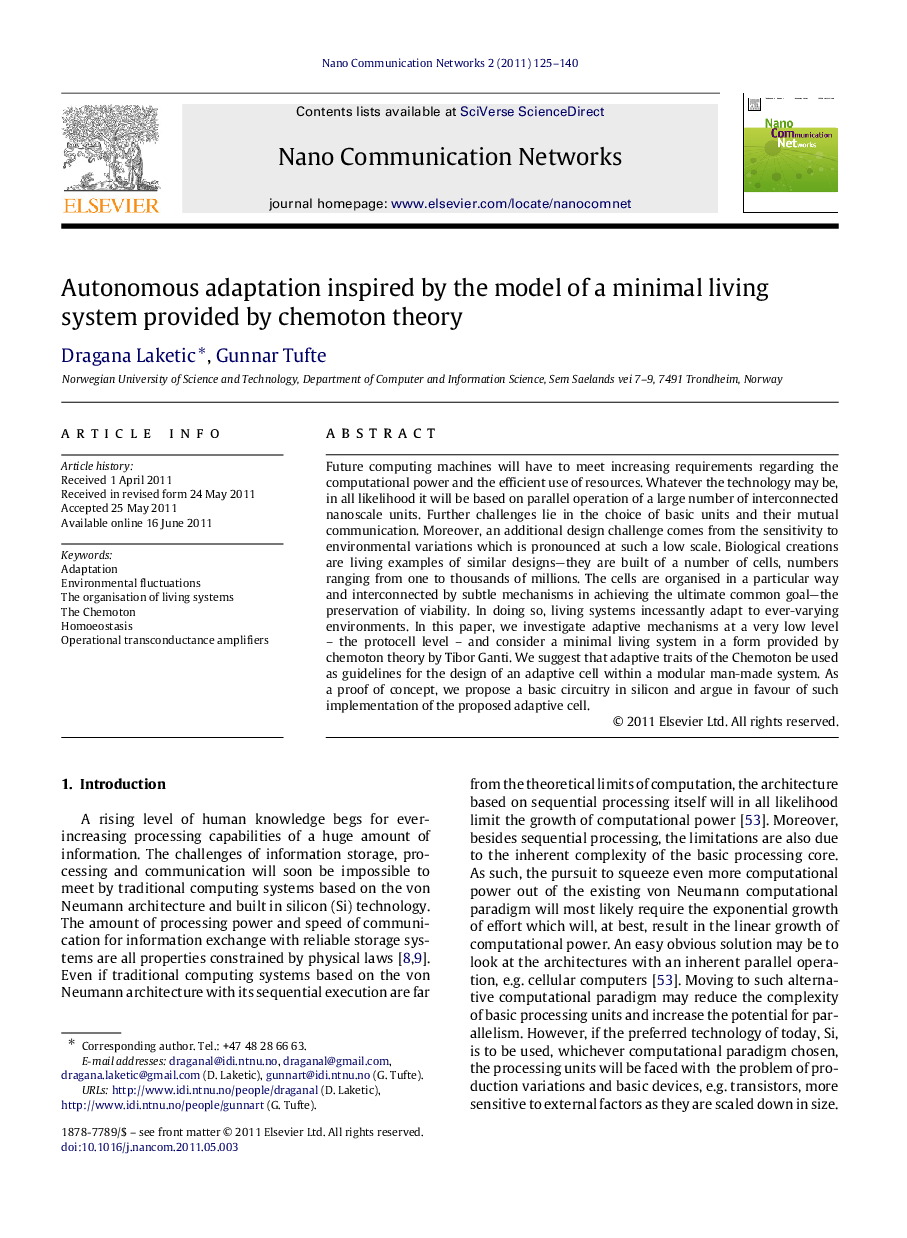| Article ID | Journal | Published Year | Pages | File Type |
|---|---|---|---|---|
| 462325 | Nano Communication Networks | 2011 | 16 Pages |
Future computing machines will have to meet increasing requirements regarding the computational power and the efficient use of resources. Whatever the technology may be, in all likelihood it will be based on parallel operation of a large number of interconnected nanoscale units. Further challenges lie in the choice of basic units and their mutual communication. Moreover, an additional design challenge comes from the sensitivity to environmental variations which is pronounced at such a low scale. Biological creations are living examples of similar designs—they are built of a number of cells, numbers ranging from one to thousands of millions. The cells are organised in a particular way and interconnected by subtle mechanisms in achieving the ultimate common goal—the preservation of viability. In doing so, living systems incessantly adapt to ever-varying environments. In this paper, we investigate adaptive mechanisms at a very low level–the protocell level–and consider a minimal living system in a form provided by chemoton theory by Tibor Ganti. We suggest that adaptive traits of the Chemoton be used as guidelines for the design of an adaptive cell within a modular man-made system. As a proof of concept, we propose a basic circuitry in silicon and argue in favour of such implementation of the proposed adaptive cell.
► We suggest a biologically inspired model of an adaptive system. ► The adaptation process makes use of endocrine communication. ► The focus is set on the architecture of a basic unit within the system. ► The basic unit is related to a model of a minimal living system given in chemoton theory. ► Initial steps for the implementation in Si are provided.
